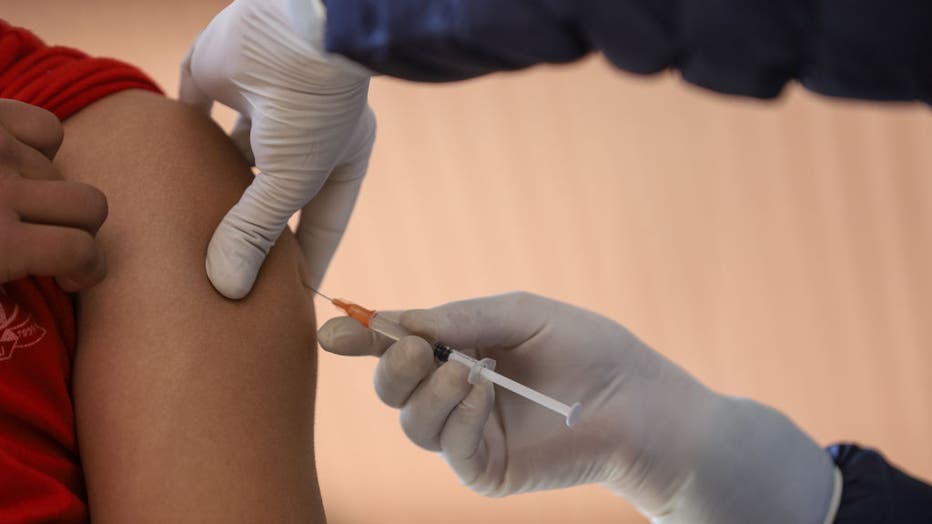Kansas measles cases reach 23; new Ohio outbreak sickens 10
More measles cases reported across the country
Dr. Peter Chin-Hong, Infectious Disease Expert, joins LiveNOW from FOX to talk about more measles cases being reported across the country. According to the CDC, there were more than 160 cases reported.
LOS ANGELES - A measles outbreak that began in southwestern Kansas has rapidly expanded to 23 cases and may be connected to earlier outbreaks in Texas and New Mexico, which have collectively sickened more than 370 people, according to state and federal health officials.
At the same time, Ohio health authorities confirmed that a case in Ashtabula County has led to 10 infections, marking a concerning resurgence of the highly contagious disease across multiple states.
Where are measles outbreaks spreading in Kansas and Ohio?
What we know:
In Kansas, the Department of Health and Environment said Wednesday that the outbreak has more than doubled since Friday, when only 10 cases had been reported. The infections have now spread across six counties: Grant, Morton, Stevens, Haskell, Gray, and Kiowa.
Nearly all of the Kansas cases are in people under 18. The outbreak began with a case identified in Stevens County on March 13. In response, Kansas health officials have issued an alert to medical providers and are recommending early MMR vaccination for infants 6 to 11 months old living in or near affected counties — a measure typically reserved for outbreak situations.
In Ohio, the state health department confirmed that 10 cases are currently in Ashtabula County. A separate case involving a visitor in Knox County led to exposure concerns across multiple counties. Ohio previously saw a large outbreak in 2022, which sickened 85 people in central parts of the state.
What we don't know:
It remains unclear how long these outbreaks will continue to grow or whether they will spread to additional states with similarly low vaccination rates.
Health officials have not identified a single source linking the Kansas and Ohio outbreaks to those in Texas and New Mexico, though potential connections are being investigated.
It’s also unknown how many exposed individuals may develop symptoms in the coming days, given the disease’s incubation period.
How are other states involved in the outbreak?
The backstory:
The Centers for Disease Control and Prevention (CDC) reported that measles cases in 2025 have already surpassed all reported cases in 2024 — even before the Kansas and Ohio clusters were added. As of Tuesday, New Mexico had 43 outbreak-related cases, and Texas reported 327. Oklahoma has nine cases linked to the Texas and New Mexico outbreaks.
Public health experts say the Texas outbreak, which began in January, could last for months. If it spreads further into undervaccinated communities, it may continue for a year or more — and could put the U.S. at risk of losing its measles elimination status.
Why vaccination rates are a key concern
By the numbers:
Health officials emphasize that the MMR vaccine — a two-dose series typically given before kindergarten — is about 97% effective at preventing measles. But several Kansas counties in the outbreak have lower-than-recommended vaccination rates:
Morton County: 82%
Stevens County: 83%
Haskell County: 58%
Gray County: 66%
Public health experts recommend a 95% vaccination rate to prevent outbreaks. Kansas’ state health department warns that more cases are likely to emerge in and around the affected counties, especially among the unvaccinated.

FILE - A person receives a vaccination as public health officials urge immunization to prevent the spread of infectious diseases. (Photo by Subaas Shrestha/NurPhoto via Getty Images)
In Ohio, CDC data from the 2023–24 school year shows that 89% of kindergarteners were vaccinated against measles — below the optimal threshold.
What they're saying:
"Given the measles activity in Texas, New Mexico, and other states around the country, we’re disappointed but not surprised we now have several cases here in Ohio and known exposure in some counties," said Ohio Department of Health Director Dr. Bruce Vanderhoff.
"This disease can be very serious, even deadly, but it is almost entirely avoidable by being properly vaccinated," he added.
Jill Bronaugh, a spokesperson for the Kansas Department of Health and Environment, said, "Due to the highly contagious nature of measles, additional cases are likely to occur within the current outbreak area and the surrounding counties, especially among those who are unvaccinated."
The Source: This article is based on reporting from the Associated Press, which cited updates from the Kansas Department of Health and Environment, the Ohio Department of Health, and the U.S. Centers for Disease Control and Prevention. Case counts and vaccination data reflect official state and federal figures as of March 2025.

